in  If you’ve ever interacted with evolutionists, you will find that they are deeply convinced that evolution is a fact. Not a theory with some challenges, but a FACT. They might admit to peripheral challenges, but nothing serious. I used to be like them. As a biochemistry major in undergrad, I remember meeting Christians who doubted evolution. How could they be so foolish? That’s what I thought, until I started looking into the information myself. And what I found astounded me.
If you’ve ever interacted with evolutionists, you will find that they are deeply convinced that evolution is a fact. Not a theory with some challenges, but a FACT. They might admit to peripheral challenges, but nothing serious. I used to be like them. As a biochemistry major in undergrad, I remember meeting Christians who doubted evolution. How could they be so foolish? That’s what I thought, until I started looking into the information myself. And what I found astounded me.
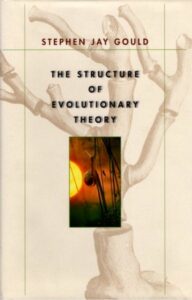 There was considerable and serious debate within the evolution community about the ability of Darwinian gradualism’s mismatch with the fossil record, and alternate possibilities like Stephen J. Gould’s punctuated equilibrium were proposed to try to sync evolutionary ideas with the actual fossil record, which not only showed a general stasis in forms over time, but a huge lack of intermediate or previous forms before complex organisms were seen in the strata. 1
There was considerable and serious debate within the evolution community about the ability of Darwinian gradualism’s mismatch with the fossil record, and alternate possibilities like Stephen J. Gould’s punctuated equilibrium were proposed to try to sync evolutionary ideas with the actual fossil record, which not only showed a general stasis in forms over time, but a huge lack of intermediate or previous forms before complex organisms were seen in the strata. 1
 I read Lubenow’s contentious book Bones of Contention,2 and realized that there were many human fossils that defied classification in the evolutionary model, being too modern for their supposed ancient age. As the very real limitations and errors of evolutionary thought mounted in my awareness (junk DNA being one of the most significant errors), I realized that I had been taught WHAT to think, not HOW.
I read Lubenow’s contentious book Bones of Contention,2 and realized that there were many human fossils that defied classification in the evolutionary model, being too modern for their supposed ancient age. As the very real limitations and errors of evolutionary thought mounted in my awareness (junk DNA being one of the most significant errors), I realized that I had been taught WHAT to think, not HOW.
Being critical of evolution, however, is like being critical of religion. You get accused of being an ill-motivated heretic who lacks understanding and education. But I’ve learned that there are some conditions under which skepticism of an accepted conclusion is warranted, when we should doubt scientific consensus. Certainly, evolutionary origins is one such case. 3
In truly arguable matters, appeals to the authority of experts is not legitimate, nor are appeals to the amount of peer-reviewed papers, since the majority control the publications with a hegemony of orthodoxy. In such matters, the only solution is to argue the specific data, from the best examples on down. Following are my recent responses to such a presentation of the “best” evidence for evolution. Not in great detail, but at the summary level. Enjoy
1. The Fossil Record
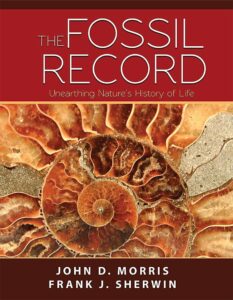 Claim: Paleontological evidence, found in the fossil record, shows a progression of life forms over geological time. Fossils of ancient organisms exhibit transitional features linking different species, providing a record of evolutionary change.
Claim: Paleontological evidence, found in the fossil record, shows a progression of life forms over geological time. Fossils of ancient organisms exhibit transitional features linking different species, providing a record of evolutionary change.
Response: First, the fossil record does show a progression, but it may not be merely from simple to complex, but from deep sea creatures to land creatures, as in it was deposited rapidly by a global flood.
Second, the overall pattern is not one of change, but of stasis, followed by huge gaps. Many fossils exist throughout the strata and even until today in an unchanged form.
Third, the Cambrian explosion and other “explosions” of fully formed creatures defies the gradualistic change model.
Fourth, there is discordance between molecular and fossil evidence. In some cases, the molecular evidence (based on DNA or protein sequences) for the divergence of species conflicts with the fossil record’s timeline. This could be due to limitations in the fossil record, uncertainties in molecular clocks, or other factors that are still being explored.
2. Comparative Anatomy
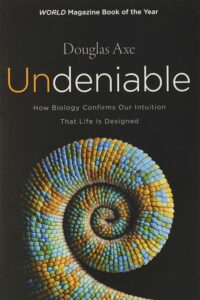 Claim: Comparative anatomy reveals similarities in the anatomical structures of different organisms, suggesting common ancestry. Homologous structures, such as the bones in the limbs of vertebrates, share a common developmental origin despite serving different functions, indicating descent from a common ancestor.
Claim: Comparative anatomy reveals similarities in the anatomical structures of different organisms, suggesting common ancestry. Homologous structures, such as the bones in the limbs of vertebrates, share a common developmental origin despite serving different functions, indicating descent from a common ancestor.
Response: Unfortunately, as the DNA sequencing data has come in over the last 40 years only, many homologous morphologies turn out to be NOT related. Hence the term “convergent evolution.” But now, we are also considering that genetic similarities may be convergently arrived at, and so the assumption of relatedness based on similarity is severely undermined.
Scientists are now having to assume a greater threshold of genetic similarity for relatedness, which actually begins to look like the biblical model of descent with modification within KINDS. And that modification seems entirely a LOSS of alleles and functionality, just as design predicts.
3. Embryology
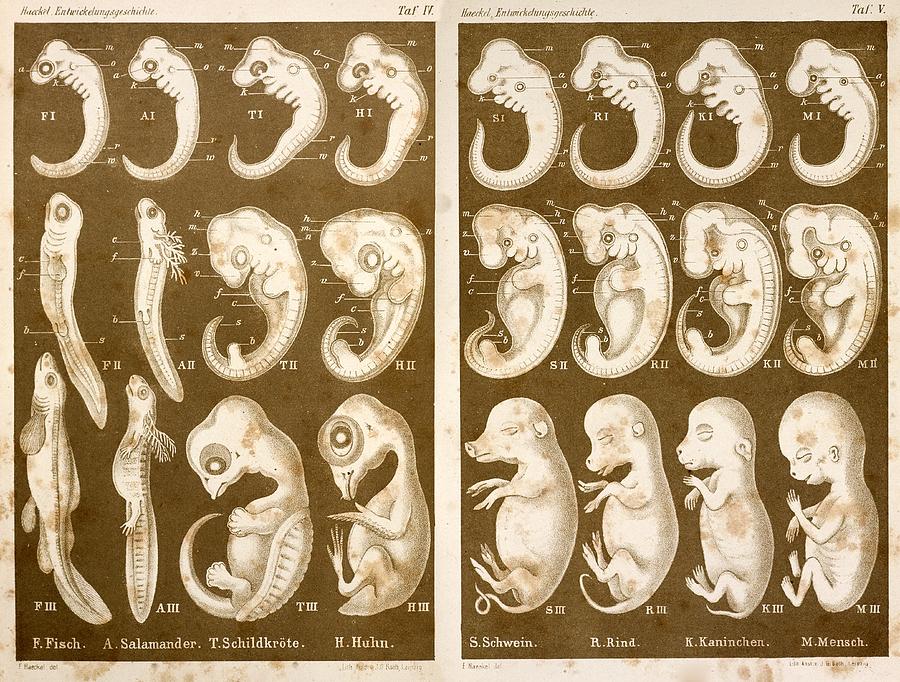
![]() Claim: Comparative embryology studies the development of embryos across different species. Similarities in embryonic development among diverse organisms provide evidence for common ancestry and evolutionary relationships.
Claim: Comparative embryology studies the development of embryos across different species. Similarities in embryonic development among diverse organisms provide evidence for common ancestry and evolutionary relationships.
Response: You do know that Haeckel’s “ontogeny recapitulates phylogeny” is largely discredited right?
Haeckel’s theoretical claim that ontogeny recapitulates phylogeny is firmly rejected by modern evolutionary biology. (Stephen Jay Gould, Paleontologist and Evolutionary Biologist)
The theory of recapitulation became discredited early in the twentieth century and is essentially rejected today. (Scott F. Gilbert, Developmental Biologist)
4. Biogeography
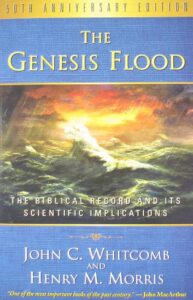 Claim: Biogeographical patterns, such as the distribution of species across different continents and islands, reflect evolutionary history and the processes of speciation, migration, and adaptation to different environments.
Claim: Biogeographical patterns, such as the distribution of species across different continents and islands, reflect evolutionary history and the processes of speciation, migration, and adaptation to different environments.
Response: This is a decent argument. The creationist response involves Pangea just starting to break up in the flood, so animals could migrate to the land masses that drifted apart, followed by normal variations. This could explain both similarity and differences.
5. Genetics
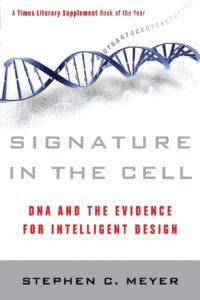 Claim: Genetic evidence, including DNA sequencing and comparative genomics, supports the theory of evolution. DNA analysis reveals similarities and differences in the genetic codes of different species, confirming evolutionary relationships and patterns of descent with modification.
Claim: Genetic evidence, including DNA sequencing and comparative genomics, supports the theory of evolution. DNA analysis reveals similarities and differences in the genetic codes of different species, confirming evolutionary relationships and patterns of descent with modification.
Response: This is circular reasoning, and as mentioned above, convergence in morphology is most likely paralleled by convergence in genetics, making similarity not clearly reflective of relatedness – you will have to greatly increase the level of similarity in order to assume relatedness, which may end up just being normal descent within kinds, which correlates to Family or Classes in Linean taxonomy. So biology seems to be confirming the biblical narrative .
6. Observational Evidence
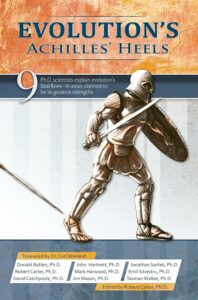 Claim: Observational studies of evolutionary processes, such as natural selection, genetic drift, and speciation, provide empirical support for evolutionary theory. Examples include observed instances of antibiotic resistance in bacteria, adaptive changes in response to environmental pressures, and the emergence of new species in isolated populations.
Claim: Observational studies of evolutionary processes, such as natural selection, genetic drift, and speciation, provide empirical support for evolutionary theory. Examples include observed instances of antibiotic resistance in bacteria, adaptive changes in response to environmental pressures, and the emergence of new species in isolated populations.
Response: Actually, none of these are proof of evolution if you narrowly define it as the creation of novel DNA and proteins. Natural selection happens, but that does not prove that new functional DNA has been created. It only selects for a single generation of possible beneficial mutations.
As seen in the Lenksy experiments, the only thing that mutation can accomplish is loss of function with temporary, if dubious benefits. Like the populations that grew faster because they lost a huge amount of DNA – they spent less time copying, but loss of function is a long term loss of fitness, even if under the artificial and ideal lab conditions, they survived.
Until you can show that something like bacterial resistance results from a an increase is specificity or new function, it’s most likely normal adaptation or a LOSS of specificity or function that has an accidental temporary benefit, but the lost functionality is a long term loss of fitness. When conditions change back, the defective DNA may now be a detriment.
The same with speciation – if you are defining it as a lack of ability to reproduce, this is not the creation of new body parts or functionality, but a loss of function, i.e. a loss of fitness.
Conclusion
The standard evolutionary arguments seem weak to me.
- The Structure of Evolutionary Theory by Stephen Jay Gould[↩]
- Bones of Contention: A Creationist Assessment of Human Fossils (2004)[↩]
- When to doubt a scientific consensus (wholereason.com)[↩]
